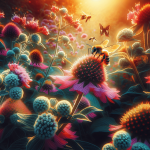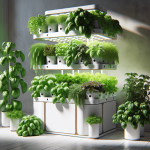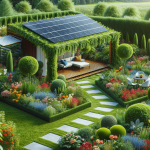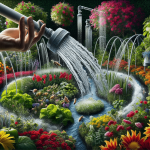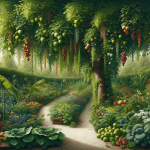This post may contain affiliate links. As an Amazon Associate, we may earn commissions from qualifying purchases.
Have you ever thought about how your garden could become a mini-ecosystem that supports a wide array of wildlife and plant species? Designing a garden to maximize biodiversity is not just a benevolent act towards nature, but it can also make your space more beautiful and resilience. Let’s embark on this fruitful journey together to create a thriving, diverse garden!
Understanding Biodiversity in Gardening
Biodiversity refers to the variety of life found in a particular habitat or ecosystem. In terms of gardening, it means creating an environment that supports a multitude of plant, animal, and microorganism species. The more biodiverse your garden, the healthier and more resilient it will become.
Why is Biodiversity Important?
Increasing biodiversity in your garden has several benefits. It promotes plant health, improves soil quality, and enhances pest control. A biodiverse garden can also attract a variety of beneficial insects, birds, and other wildlife, creating a vibrant ecosystem right in your backyard.
Involving Native Plants
Native plants are those that have evolved naturally in your region and are well-suited to the local climate and soil conditions. They form the backbone of a biodiverse garden because they require less water, fertilizers, and pesticides, and they provide food and habitat for local wildlife.
Planning Your Biodiverse Garden
Embarking on this gardening journey requires a thoughtful plan. Begin by observing your garden space and considering the specific conditions such as sunlight, soil type, and existing plantings.
Evaluate Your Garden Space
- Sunlight: Note the areas of full sun, partial shade, and full shade.
- Soil: Conduct a soil test to determine its composition and pH.
- Moisture: Assess how water moves through your garden, identifying damp and dry areas.
Setting Biodiversity Goals
Decide what you want to achieve:
- Attract Pollinators: Focus on a variety of flowering plants.
- Support Wildlife: Incorporate shrubs and trees for shelter.
- Restore Native Habitat: Prioritize local plant species.
These goals will guide your plant selection and garden design.
Sketch a Layout
A garden layout sketch helps visualize how different elements will come together. Include:
- Planting beds
- Paths and walkways
- Water features
- Shelters and feeders for wildlife
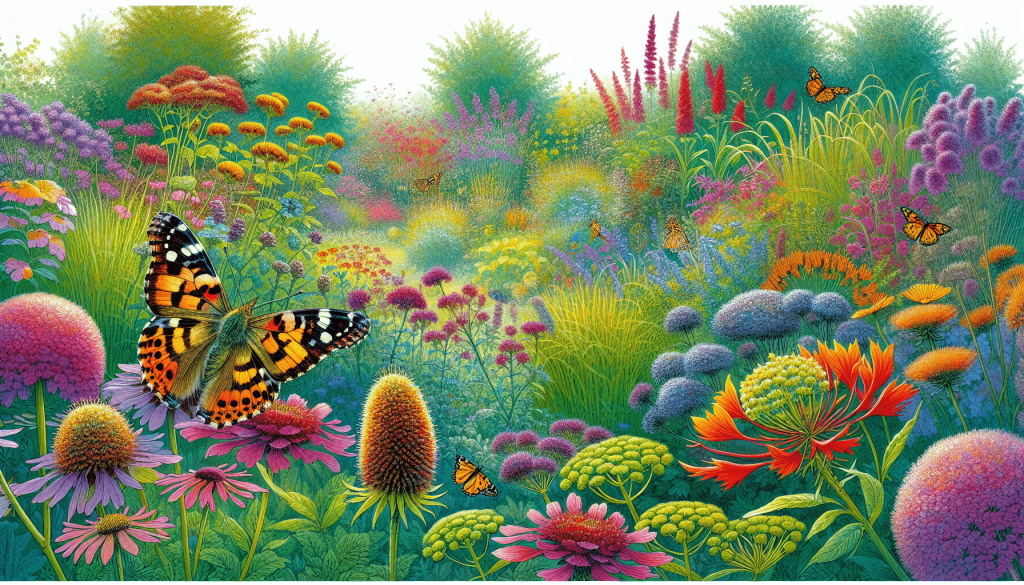
Choosing the Right Plants
Selecting plants that contribute to biodiversity involves understanding their roles and relationships within the ecosystem. Here are some plant types to consider for a biodiverse garden.
Diverse Plant Types
Each plant type brings unique benefits and supports different wildlife species.
| Plant Type | Benefits | Examples |
|---|---|---|
| Flowering Plants | Attract pollinators and provide nectar/pollen | Lavender, Sunflower, Echinacea |
| Grasses | Provide ground cover and nesting material for birds | Switchgrass, Blue Fescue |
| Shrubs | Offer food and shelter for various wildlife | Dogwood, Viburnum |
| Trees | Create vertical layers and habitat complexity | Oak, Maple, Pine |
| Aquatic Plants | Support pond ecosystems and water purification | Water Lilies, Cattails |
Incorporating Native Plants
Local plants are a cornerstone for a biodiverse habitat. They support local wildlife more effectively than non-native species. Research native plants specific to your region and include them abundantly in your garden.
Companion Planting
This method involves placing complementary plants close to each other to enhance growth, improve pest management, and maximize space. For instance, plant marigolds near tomatoes to deter pests.
Creating Layers in Your Garden
A layered garden mimics natural ecosystems and supports various species at different heights.
Vertical Layers
- Canopy Layer: Tall trees form the highest layer.
- Understory Layer: Smaller trees and large shrubs grow below the canopy.
- Shrub Layer: Shrubs of varying heights create intermediate layers.
- Herbaceous Layer: Includes perennials, grasses, and ground covers.
- Ground Layer: Mosses and shade-loving plants thrive here.
- Root Zone: Underground roots and bulbs form a hidden but vital layer.
Horizontal Layers
Design your garden to have a mix of:
- Open Areas: Sunnier spots for sun-loving plants.
- Dense Thickets: Shadier areas with shrubs and small trees.
- Wetlands or Ponds: Aquatic environments.
Providing these different habitats supports a wider range of wildlife.
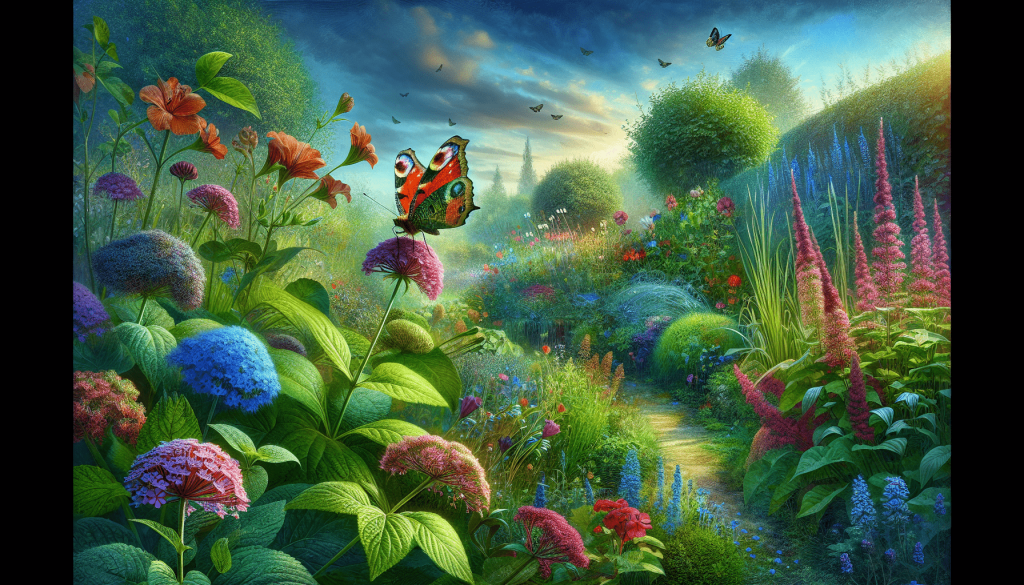
Water Features: Adding a Source of Life
Water is a magnet for biodiversity. Introducing a pond, birdbath, or small fountain can greatly enhance the ecological value of your garden.
Ponds and Water Gardens
A pond can support aquatic plants, insects, amphibians, and birds. Aim to include floating, submerged, and marginal plants to create a balanced aquatic ecosystem.
Birdbaths and Drinking Stations
These features provide essential water for birds, insects, and small mammals. Place them in a safe, open area where animals can easily access them but are protected from predators.
Shelter and Habitat Considerations
Wildlife needs places to hide, nest, and overwinter. Providing shelter encourages them to take up residence in your garden.
Nesting Sites
Install birdhouses, bat boxes, and insect hotels. Place these structures in sheltered areas away from human activity to encourage occupancy.
Brush Piles and Logs
Leave fallen logs, rocks, and brush piles in your garden. These materials provide hiding spots for small mammals, reptiles, and insects.
Mulch and Leaf Litter
A layer of mulch or leaf litter on the ground supports soil health and offers habitat for beetles, worms, and other decomposers.
Practicing Sustainable Gardening
To truly maximize biodiversity, your gardening practices should be sustainable and environmentally friendly.
Organic Gardening
Avoid synthetic fertilizers and pesticides. Use compost and natural pest control methods to keep your garden healthy.
Water Conservation
Implement rain gardens, rain barrels, and drip irrigation to conserve water and reduce runoff. Choose drought-tolerant plants to minimize water usage.
Composting and Soil Health
Composting returns vital nutrients to the soil, promoting health and fertility. Healthy soil supports a diverse microbial community essential for plant growth.
Engaging with Your Garden
Interacting with your garden not only enriches your experience but helps you stay attuned to its needs.
Regular Observation
Spend time observing your garden. Note which plants thrive, what wildlife visits, and any issues that arise. This helps you make informed decisions about garden care.
Citizen Science
Participate in citizen science projects that track local wildlife. This can be as simple as recording bird sightings or monitoring plant health.
Sharing Knowledge
Share your experiences with friends, neighbors, and local gardening clubs. Swap seeds, plants, and ideas to further promote biodiversity in your community.
Potential Challenges and Solutions
Creating and maintaining a biodiverse garden comes with its own set of challenges. Being prepared will help you address these effectively.
Managing Pests
In a biodiverse garden, pests are less likely to become overwhelming due to natural predators. However, you might still encounter issues.
- Integrated Pest Management (IPM): Use mechanical, cultural, and biological control methods before considering chemical treatments.
- Encourage Predators: Ladybugs, spiders, and birds are your allies in pest control.
Invasive Species
Non-native invasive species can outcompete local plants and disrupt the balance of your garden.
- Regular Monitoring: Keep an eye out for any aggressive, non-native plants.
- Early Removal: Address invasive species promptly to prevent them from spreading.
Changing Conditions
Gardens are dynamic systems that change over time.
- Adaptation: Be willing to adjust your plans as plants grow and conditions change.
- Diverse Planting: Plant a variety of species to ensure some will thrive even when others do not.
Wrapping up Your Biodiverse Garden Design
Designing a garden layout that maximizes biodiversity is a rewarding endeavor. It transforms your space into a thriving ecosystem that benefits both you and the environment. By carefully planning and implementing a variety of plant types, water features, and sustainable practices, you’ll create a resilient and vibrant garden.
So, let’s get our hands dirty and bring your vision of a biodiverse garden to life. Remember, every small step counts towards making our world a little greener and more beautiful. Happy gardening!


